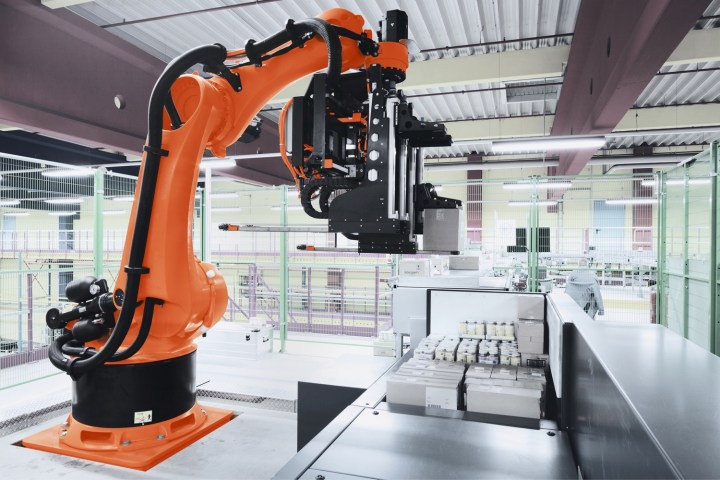
Got the craving for a KitKat bar, but wish you didn’t have to get up to go to a store? In the future, it could be delivered to you, straight from the the warehouse. Nestlé and XPO Logistics are building Nestlé’s first-ever, fully digital distribution center that’s designed to speed up the delivery of Nestlé-branded products to consumers, such as KitKat, Maggi, and Nescafé. Located in Leicestershire, in the East Midlands region of England, the facility will be owned and managed by XPO.
“We will be able to be even more responsive for our customers across our brands, which include some of the most recognizable in the world,” said David Hix, Nestlé’s director of supply chain, in a statement.
The automated, 638,000-square-foot center, scheduled for completion in 2020, will rely heavily on robotics and autonomous vehicles, as well as “predictive data and intelligent machines to deliver one of the most advanced distribution management centers in the world,” according to the two companies involved. XPO will also use the facility to test new technologies and prototypes before implementing them in other XPO-owned facilities.
The “digital warehouse of the future” will be located in a transportation hub, with proximity to highways, an airport that handles many cargo flights, and an onsite rail freight terminal that leads to major ports. With a fully automated warehouse and access to several transportation options, Nestlé, the world’s largest food and drink company, would be able to deliver products faster and efficiently to consumers in the U.K., continental Europe, and beyond.
“The new East Midlands center will operate as both a think tank and a launch pad for XPO innovations, with far-reaching impacts on the way business is done,” said Richard Cawston of XPO Logistics Europe, in a statement.
XPO, one of world’s largest service providers for transportation and logistics, will also incorporate sustainable features into the building. In addition to LED lighting, the warehouse will use “environmentally friendly ammonia refrigeration, air source heat pumps for administration areas, and rainwater harvesting,” according to XPO, and the building itself will have minimal visual impact to the surrounding area.
Warehouse and distribution centers are increasingly becoming automated, using more and more robotics, smart sorting systems, and autonomous vehicles alongside human employees. While it would be a couple years until the Nestlé/XPO high-tech facility comes online, we can already look to Amazon’s highly automated fulfillment centers as examples of what we can expect.
Editors' Recommendations
- Meet Digit: The ostrich-legged robot that might one day deliver you packages
- Boston Dynamics’ clever Handle robot gets an autonomous co-worker
- Startup founded by ex-Navy SEALs is building underwater robots to map the ocean
- Autonomous robot deliveries are coming to 100 university campuses in the U.S.
- NASA wants your help developing autonomous robots to explore other worlds


